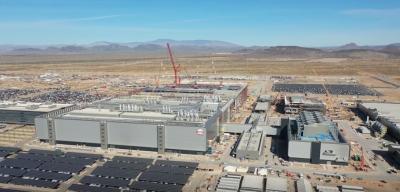For the third time in ten years, Sandbridge Beach, 5 mi. (8 km) of open public beach in the southern part of Virginia Beach, is being replenished. Since the 1970s, the city has battled erosion of sand dunes that were huge at one time, and storms have left private property and public infrastructure damaged in their wakes. Within the last decade, storms have been increasing in frequency and size, costing more money in damages, and necessitating more sand replenishment.
Sandbridge is not a typical tourist resort with a boardwalk, restaurants and nightclubs. It is a family-oriented, tranquil setting with two and three-story beach cottages housing permanent residents as well as vacationers who rent the homes.
Who pays for the sand replenishment has often been a point of confusion and, many times, a point of contention for city taxpayers. Sandbridge homeowners pay a special tax revenue, also known as a Special Service and Tax Increment Financing District, that other citizens of Virginia Beach do not pay.
The U.S. Army Corps of Engineers, Norfolk District, awarded the $9.7 million Sandbridge Beach nourishment contract, which will pipe a little more than 2 million cu. yd. (1.5 million cu m) onto the beach, to Weeks Marine Inc. of Covington, La. The city, using the tax revenue from Sandbridge residents, will cover $7.5 million of the contract. The remaining amount will be paid for with federal funds.
Weeks started work on the contract at Little Island Park, the southernmost point of Sandbridge, at the end of June. Workers will move north for 5 mi. (8 km) and end at the Fleet Combat Training Center at Dam Neck Naval Facility. Work on the contract will occur 24 hours a day and 7 days a week for roughly two months.
According to Andrew Reid, construction project manager for the U.S. Army Corps of Engineers, Norfolk District, one of the reasons Weeks was selected for the contract is because it has the equipment required to perform the job.
“There are a limited number of dredging companies with hopper dredges,” Reid said.
Weeks is using two of its dredging boats on the project. The R.N. Weeks is an 8,400 hp (6,260 kw) hopper dredge that has the capacity to hold 4,000 cu. yd. (3,040 cu m). The other hopper dredge is the 10,000 hp (7,450 kw) B.E. Lindholm, also with a 4,000 cu. yd. (3,040 cu m) capacity. Recently, the Lindholm broke down for three weeks, so the contract was extended, changing the completion date to Sept. 15.
The two dredges take turns collecting the sand offshore from a borrow area approximately 3 to 5 mi. (4.8 to 8 km) east of Sandbridge Beach. After dredging the sand, the hopper travels west and sits 2,000 ft. (60,000 cm) from the shore while it pumps in sand through pipes onto the beach. Reid estimates that 4,000 ft. (120,000 cm) of pipe is being used on the entire project.
“It takes approximately two hours for the dredge to complete a cycle,” Reid said.
Work is occurring on temporarily closed sections of beach. Reid explained that “1,500 feet will be roped off for work.” Each section will remain closed for about a day, and Weeks anticipates completing 600 to 700 ft. (180 to 210 m) of beach replenishment per day or approximately 40,000 cu. yd. (30,400 cu m) of sand per day. Reid estimates that 900,000 cu. yd. (684,000 cu m) of replenished sand has been completed so far with approximately 1.2 million cu. yd. (912,000 cu m) left to be piped onto the beach.
“We are past the learning curve now,” explained Reid. “They are as efficient as they can get right now.”
Weeks owns the construction equipment that is being used for the project. It does not rent equipment because most companies do not want the wear and tear on equipment that comes from operating in the sand. In addition, Reid mentioned the damage that the ocean’s salt water can have on the equipment.
Presently, Weeks is using a Cat 966G wheel loader with a grapple attachment to move pipes. Two Cat D8N crawler dozers are distributing the sand on the 50 to 75 ft. (15 to 22 m) wide beach berm and bringing it to grade and slope.
Work is occurring during the summer months because the city saves money since summer is considered off-season for dredging. The city is not the only one benefiting from the arrangement. The two dredging hoppers would probably be sitting idle during the summer season, so Weeks profits as well.
“It was a great unit price because they had two dredges sitting idle,” Reid said. “We’re paying the same unit price as we paid in 2003.”
Another reason summer is the preferred month to perform dredging is that winter storms tend to be more severe than summer storms. In the winter, storms can bring high seas and cause costly delays.
However, summer projects come with their share of challenges. Sandbridge Beach is a choice vacation destination for tourists, some of whom have expressed displeasure at hearing the noise from the equipment and having work performed right outside their rental homes at all hours of the day. Reid understands their dilemma but points out that the work zone moves northward 600 ft. (180 m) per day. Weeks also must set up the work area to ensure that beachgoers have safe access to the beach. Sand ramps are built over sections of the pipeline so people have access to the ocean.
Another difficulty for workers is keeping the environment and animal habitats unharmed. Many native species, including marine turtles, piping plovers and least terns, are protected, and construction cannot disturb the nesting and foraging activities of these species in any way.
An annual erosion rate of 300,000 cu. yds. (228,000 cu m) of sand per year is anticipated at Sandbridge Beach. In order to offset the long-term effects of erosion, the U.S. Army Corps of Engineers designed a replenishment schedule for the beach.
“We anticipate a certain erosion rate,” Reid said. “Based on that rate of erosion, we design the beach so that it will be here to counter the annual loss.”
The beach was replenished for the first time in 1998 with 1.1 million cu yds (836,000 cu m) of sand that was dredged from offshore. Another replenishment occurred in 2003, part of five nourishment cycles that will happen on two to three year intervals. Eventually, the beach will be restored to a sufficient width and height, and it will be able to withstand damage from all but the strongest of storms.
The current replenishment is the third cycle, and everything is on schedule for the completion of all five cycles, provided that federal funding comes through. CEG
Today's top stories















